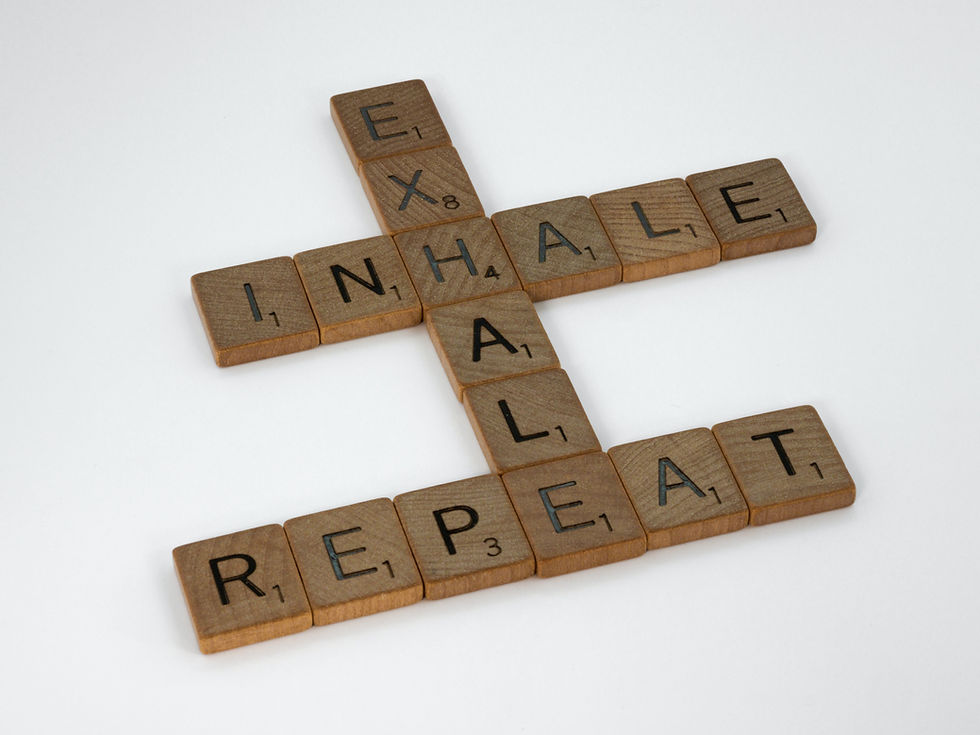What Your Poop Is Telling You
- Marissa Sylvester
- Jun 1, 2022
- 4 min read
So, let’s be honest. Most people that I connected with go a little squirrely when they are asked to talk about their bodily functions. We have been conditioned to feel some shame or apprehension about them, especially when it comes to talking about our daily bowel movements or lack thereof…. but guess what, we all poop. Food goes in, it gets digested, absorbed, and then eliminated. For me, as a Registered Holistic Nutritionist, I consider how it looks when it comes out, (colour, consistency, frequency), as well as how easily you can pass stool (do you have to push? do you run full speed for the bathroom or does it happen in one swift movement so easy you are in and out in 2 mins?) is all valuable information. All of these things are indicators, for me and for you too, of how well your digestive system is functioning.
Today, I want to teach you about a visual tool you can use, to help you determine how well you are digesting, detoxifying, and eliminating. I am hopeful using it will help you understand your body better and perhaps assist you in getting more comfortable understanding and talking about your bodily functions. Well, at least this one. ;)
I am talking about using the Bristol Stool Chart. This is a visual chart that can tell us which boxes we need to check and balance in order to influence our bowels and have more regular, easy-to-pass, formed bowel movements. Let’s dive right into the chart and the 7 types of bowel movements we usually have.

Bristol Stool Chart Type 1: Severe Constipation
Separate hard lumps, like little balls (hard to pass).
Bristol Stool Chart Type 2: Mild to Moderate Constipation
Sausage-shaped, but lumpy.
Bristol Stool Chart Type 3: Normal Bowel Movement
Like a sausage, but with cracks on its surface.
Bristol Stool Chart Type 4: A PERFECT POOP!!
Like a sausage or snake, smooth and soft.
Bristol Stool Chart Type 5: Lacking Fibre
Soft blobs with clear cut edges (passed easily).
Bristol Stool Chart Type 6 Moderate Diarrhea and a sign of Inflammation
Fluffy pieces with ragged edges, a mushy stool.
Bristol Stool Chart Type 7 Severe Diarrhea with Inflammation
Watery, no solid pieces. Entirely liquid.
Type 1 and 2 Stools:
With a Type 1 bowel movement, you can usually see separate hard lumps, and with type 2 you will see a sausage-shaped log with a lumpy texture. Both types could prompt a conclusion of constipation, as typically these types of stools are hard, dry, and difficult to pass. In my house, we call these Deer Terds! LOL. They also are typically darker brown in colour.
Why is this happening? Usually, in cases of Type 1 and 2 stools, food passes too slowly through the digestive system (impaired motility of the GI tract and bowels) and the colon absorbs too much water.
To help brush out the poop in your colon and soften your bowel movements, try consuming more fibre. (I have an amazing product I recommend to my clients). I also recommend drinking more water and engaging in regular physical activity. Please prioritize moving your body in some way every day!).
Types 3, 4, and 5 stools:
With a Type 3 bowel movement, you can see a shape similar to a sausage but you could also see cracks on the surface. With a type 4, you again see a similar appearance to type 3 but with a smooth and soft surface. I call this a PERFECT POOP! Experts generally agree that these two types of stools are considered to be the most healthy forms of bowel movements and the ones we should all strive to obtain on a daily basis!
Then we have Type 5. These stool classifications are typically softer, blob-like plops, with clear-cut edges that a person can pass easily. Some could consider this type to be more “normal” in those without bowel issues. Some other practitioners may suggest it is too loose and in need of a more fibre rich dietary lifestyle.
Types 6 and 7 stools:
Ok, so with these types of stools you typically feel like you should stay closer to home as urgency could strike at any time. This is not a terrific feeling and I feel for you. I have been here myself.
With a type 6 bowel movement, stool is more of a mushy consistency, that appears to have “fluffy” pieces and ragged edges. While a type 7 BM, is entirely liquid with no solid pieces. These stools are typically what we would call diarrhea, as the stools are loose, light brown in colour, lacking fibre and formation and can be accompanied with cramping and even burning sensations. (“acidic bowel movements). The reason these types of stools could be happening is due to passing the stool through the digestive system too quickly ( hello malabsorption) and the bowels lack enough fibre and nutrients, to absorb water, and slow down the contractions in the intestinal tract .
To assist in treating diarrhea, individuals need to drink plenty of fluids to maintain hydration, consume more fibrous foods like apples, tubers, celery, seeds (Flax, chia, psyllium husk) and consider removing processed foods, rancid fats, refined sugars and foods that may be causing irritation of the GI tract.
So there you have it. The Bristol Stool Chart and a couple tips to help you in your bowel function understanding. I hope the next time a practitioner asks you about the quality of your bowel movements (P.S. Every health practitioner should be) you feel more confident and informed to have this vital conversation.
Want to continue the conversation? Follow along with this week’s content over on Instagram! You can find me @marissasylvesterwellness. Warmly, Marissa, R.H.N.




Comments